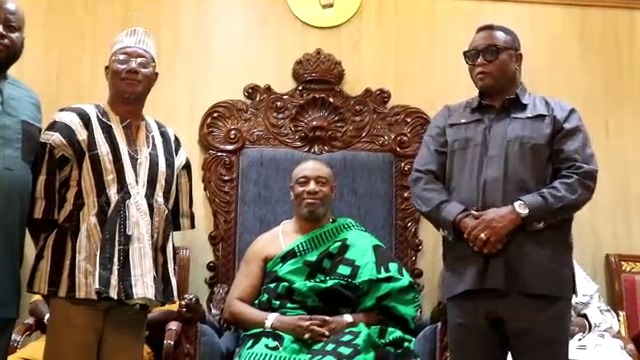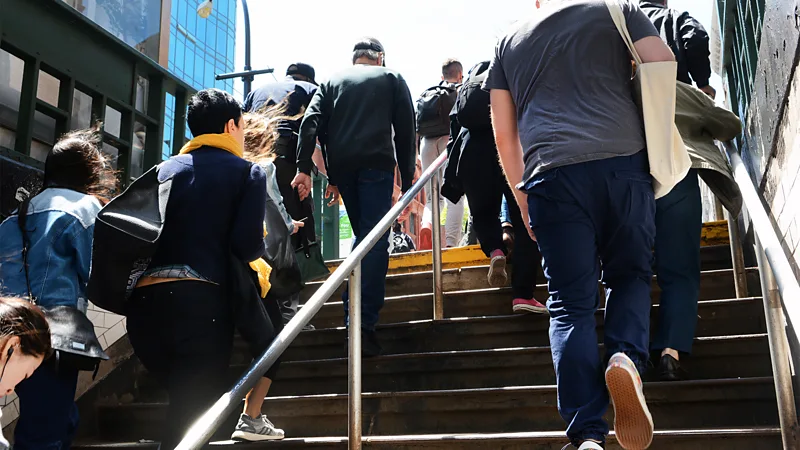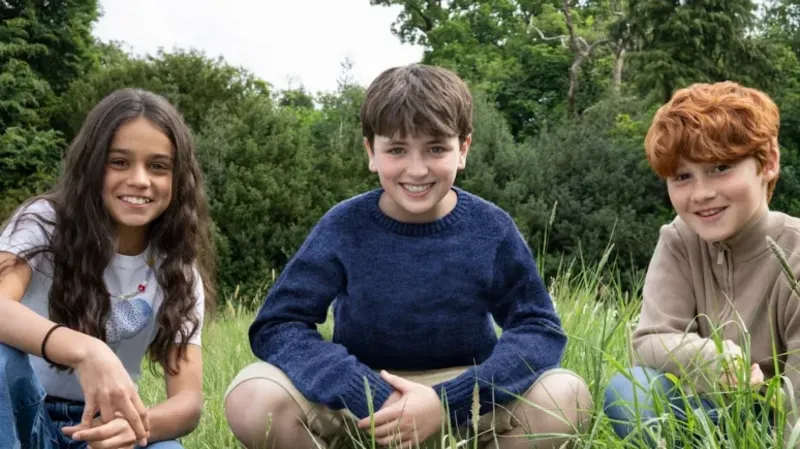'This will make them scream': Alfred Hitchcock on his film-making secrets
Films: 'I believe in putting the horror in the mind of the audience, not on the screen' - Alfred Hitchcock

Renowned as the "master of suspense", in 1964 Alfred Hitchcock told the BBC why it was his skill at playing with the audience's emotions and expectations that kept them glued to the screen.
"I believe in putting the horror in the mind of the audience, and not necessarily on the screen," film director Alfred Hitchcock told the BBC in 1964, when asked how he perfected his uncanny ability to keep cinema audiences on the edge of their seats.
The film-maker, who would have turned 125 this week, was explaining to the BBC's Huw Wheldon that his deftness at building and maintaining cinematic suspense was rooted in his intuitive understanding of human psychology.
Hitchcock had, by this time, already revolutionised the thriller genre with a string of classic films that played on their audience's psyche, such as Vertigo, Psycho and Strangers on a Train. A master at the art of slowly ratcheting up tension on screen, he believed the key to suspense was not merely shocking the viewers but subtly manipulating their perception and emotions.
In his movie scenes, he would slowly build a mounting escalation of threat, stretching out the audience's anxiety that something terrible could occur at any moment. Then when the pay-off finally happens, cinemagoers would be flooded with an intense feeling of relief.
In a creepy sequence in 1963's The Birds, where the creatures suddenly start making bizarre and unexplained violent attacks on people, Hitchcock had demonstrated this art. In the scene, Tippi Hedren's Melanie is seen smoking by a playground to the sound of school children singing. The camera keeps cutting between Melanie, and the gradually increasing number of crows landing on the playground equipment behind her. Each shot of Melanie is a closer framing of her face, heightening the audience's realisation of her obliviousness to the growing danger the flock of birds present to her.
Hitchcock likened himself to being the operator of a switchback railway - an early form of rollercoaster - knowing how far to push his audience to thrill them but not going so far as to make it unpleasant. "I am, in some respects, the man who says, in constructing it, says 'how steep can we make the first dip?', and 'this will make them scream'," he said.
"If you make the dip too deep, the screams will continue as the whole car goes over the edge and destroys everyone. Therefore, you mustn't go too far, because you do want them to get off the switchback railway giggling with pleasure, like the woman who comes out of the movie, a very sentimental movie, and says, 'oh, I had a good cry'."
The director called this sensation "the satisfaction of temporary pain". People will "endure the agonies of a suspense film" providing you give them some form of cathartic release from the tension.
He had learnt the cost of pushing it too far when he made his 1936 espionage thriller Sabotage. The film tells the story of a wife slowly uncovering her husband is planning a terrorist attack, and was met with a lukewarm response from audiences and critics when it was released.
Hitchcock laid the blame for this at a particular scene in the movie. In it, the tension is steadily ramped up as a boy travels across London to deliver a parcel, unaware he is actually carrying a bomb with a timer. The audience has already been shown the bomb, increasing their expectation of an impending disaster. The sequence then cuts between shots of the boy, the bomb package and various clocks he passes, which show that time is running out.
"The clock's going, the time for the bombing to go off at such and such a time, and I drew this thing out, attenuated the whole business," Hitchcock told the BBC. "Then someone should have said 'oh my goodness there is a bomb,' picked it up and threw it out the window. Bang! But everybody is relieved.
"But I made the mistake, I let the bomb go off and kill someone. Bad technique. Never repeated it."
Action without words
Hitchcock knew that for the suspense to work, it had to be rooted in the audience's anticipation of danger. So, viewers needed to be aware of things that were unknown to the film's characters. Then, they could work out ahead of time what might happen, and worry about the outcome.
He would meticulously plan his shots to give these necessary facts to the viewer to allow suspenseful situations to be set up. In his 1959 classic, North by Northwest, in the famous scene where Roger Thornhill (Cary Grant) is terrorised by a crop-dusting pilot, the opening wide shots spend time establishing how flat and open the landscape is. So, when Grant is attacked by the swooping plane, and his would-be assassin starts firing, the audience already knows there is nowhere for him to take cover.
At times Hitchcock would zoom in to small, revealing details, forcing the viewer to see them.
In a pivotal scene in 1954's Rear Window, the camera zooms in to show Lisa Fremont's (Grace Kelly) hands signalling her discovery of the murdered Mrs Thorwald's ring to LB Jeffries (James Stewart), who is watching from the opposite apartment. The camera pans to a close-up to the face of murderous husband Lars Thorwald (Raymond Burr), noticing that Lisa is signalling. And then him lifting his head to see who she is signalling to and suddenly realising that Jeffries is watching. Without any dialogue, the audience now knows both Lisa and Jeffries are in danger.
Although Hitchcock was extremely adept at using sound or silence to intensify cinematic impact, such as Bernard Herrmann's iconic screeching violins in 1960's Psycho, he thought of himself as primarily a visual storyteller.
He had started his career directing silent movies in the 1920s, and had learnt to push boundaries of what the camera would usually do. He constantly experimented with daring camera moves and innovative editing to convey essential plot details, characters' motivations or their emotional state of mind.
Often, he would use point-of-view shots to make the audience intimately involved in the story, luring them into empathising with the main character's plight. You can see this in his 1958 thriller about obsession, Vertigo. In it he used the now famous dolly zoom - a disorienting technique where the camera zooms in while it is simultaneously being pulled back - to allow viewers to experience the feeling of fear, shock and confusion at the same time that its protagonist is hit by vertigo, helping to create that emotional connection.
In Rear Window, the audience watches much of the film from the point of view of wheelchair-bound Stewart as he spies on his neighbours. Viewers see events unfold through Stewart's eyes, uncovering clues about his neighbour's murder at the same time as him, heightening the uneasy voyeuristic tension of the film.
Playing mind games
Getting his audience to invest this emotional involvement was key for the Hitchcock, so he could manipulate how they felt. This, he thought, was much more important than what the film was actually about. It was Hitchcock who popularised the term "MacGuffin" a plot device that drives characters' motivation and the story forward without intrinsic meaning.
"I don't care about content at all," he told the BBC's Wheldon. "The film can be about anything at all, as long as I'm making that audience react in a certain way to whatever I put on the screen. And if you begin to worry about the details of what are the papers about, that the spies are trying to steal, well that's a lot of nonsense. I can't be bothered about what the papers are that the spies are after."
And Hitchcock knew that it was not necessary to show the audience everything to elicit this kind of intense feeling from them, and that what audiences imagine is often more terrifying than what they actually see.
In Psycho, there is an infamous scene that shows his mastery of composition and editing to extract maximum emotional reaction from cinema goers. As BBC Talking Movies' Tom Brook said in 2020: "No verbal description of Psycho can convey its true visceral impact."
In the sequence, the character Marion Crane (Janet Leigh) is stabbed in the shower. The moment is shown in a rapid montage which cuts between images of the attacker with the knife in motion, juxtaposed with close-up shots of her terrified face, coupled with a dissonant, shrieking score. The fast pacing of the editing, impeccably in time with the jarring sounds, creates an acute sense of violence, vulnerability and panic in the viewer, without actually showing images of the knife going into the victim or explicit gore.
"Well, I deliberately made that pretty rough," said Hitchcock. "But as the film developed, I put less and less physical horror into it because I was leaving that in the mind of the audience, and, as the film went on, there was less and less violence but the tension, in the mind of the viewer, was increased considerably. I was transferring it from the film into their minds.
"So, towards the end, I had no violence at all. But the audience by this time was screaming in agony. Thank goodness!"
Source: BBC
























































